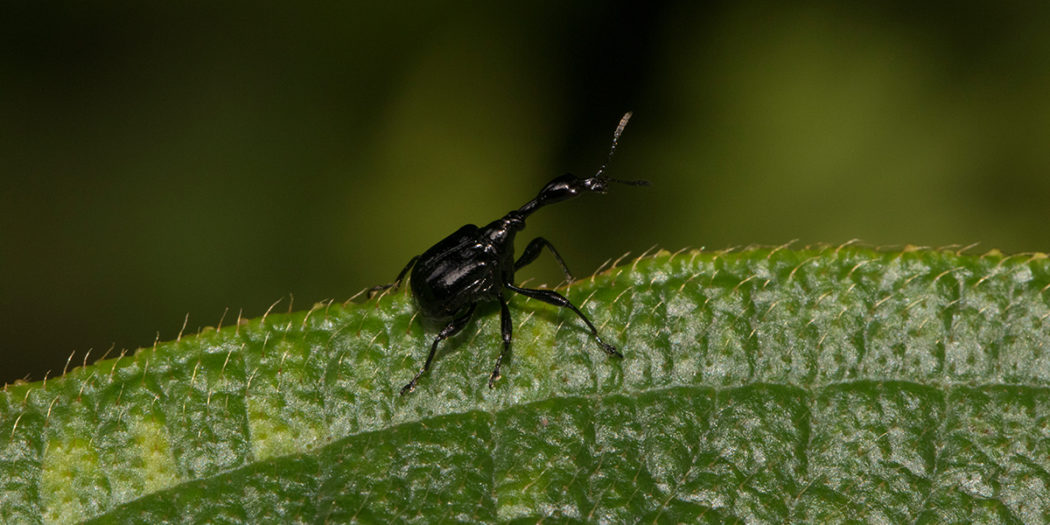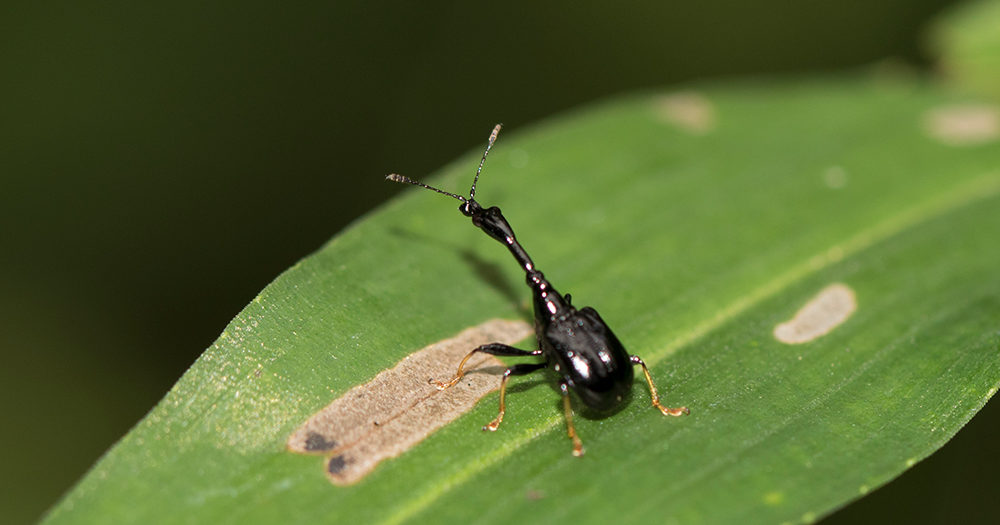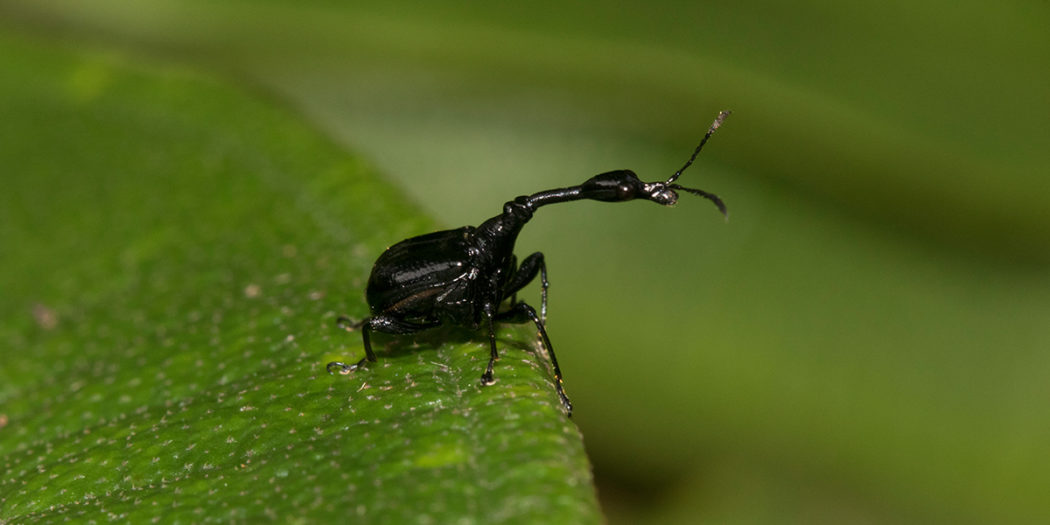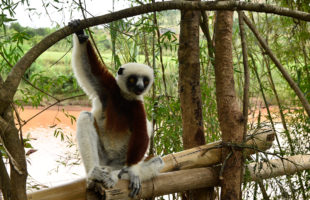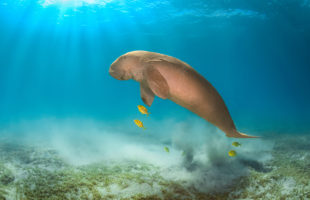The giraffe-necked weevil is one of the most famous insects in Madagascar. Named after its long neck, it is regarded as absolutely unique on the red island. However, there is another, the smaller brother of the giraffe-necked weevil on Madagascar.
The species Trachelophorus madegassus occurs in the rain forest of Ranomafana and some other areas of the Madagascan highlands. The species looks enormously similar to the original, it becomes however only half as big and carries simple, black wings instead of red. With only five to nine millimeters body length the animals are really tiny. Often the smaller beetle is even found near the large giraffe-necked weevil. Therefore, the myth still exists in many places that these are “young animals”. This is of course wrong. The little brother of the giraffe-necked weevil is an own species. Young animals, thus still growing ‘beetle children’, do not exist with beetles at all.
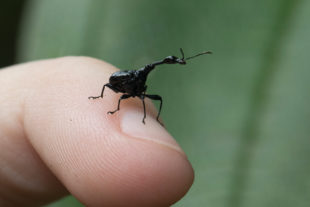
The females roll – exactly like the big sisters – each a special leaf carefully around an individual egg. If the leaf package is rolled ready, the female giraffe-necked weevil cuts it from its stem and it falls to the ground. A larva hatches from the egg, safely covered in the leaf. The leaf rolled up around the larva serves as the first food. Later the larva pupates and after the metamorphosis, the finished black giraffe-necked weevil emerges from the pupa.
The black giraffe-necked weevil has a somewhat shorter neck than its big brother. Trachelophorus madegassus was discovered by the way already in 1922. The French entomologist Alphonse Hustache described the species after a prepared insect in the collection of the Natural History Museum of Paris. Altogether there are almost 20 species of giraffe neck beetles worldwide. Two of them live exclusively in Madagascar.
If you want to find both the real giraffe-necked weevil and its little brother, you should go to the Ranomafana National Park. Here, especially during the rainy season, the chances are very good to discover the small natural wonders.
 MADAMAGAZINE Your Magazine about Madagascar
MADAMAGAZINE Your Magazine about Madagascar
